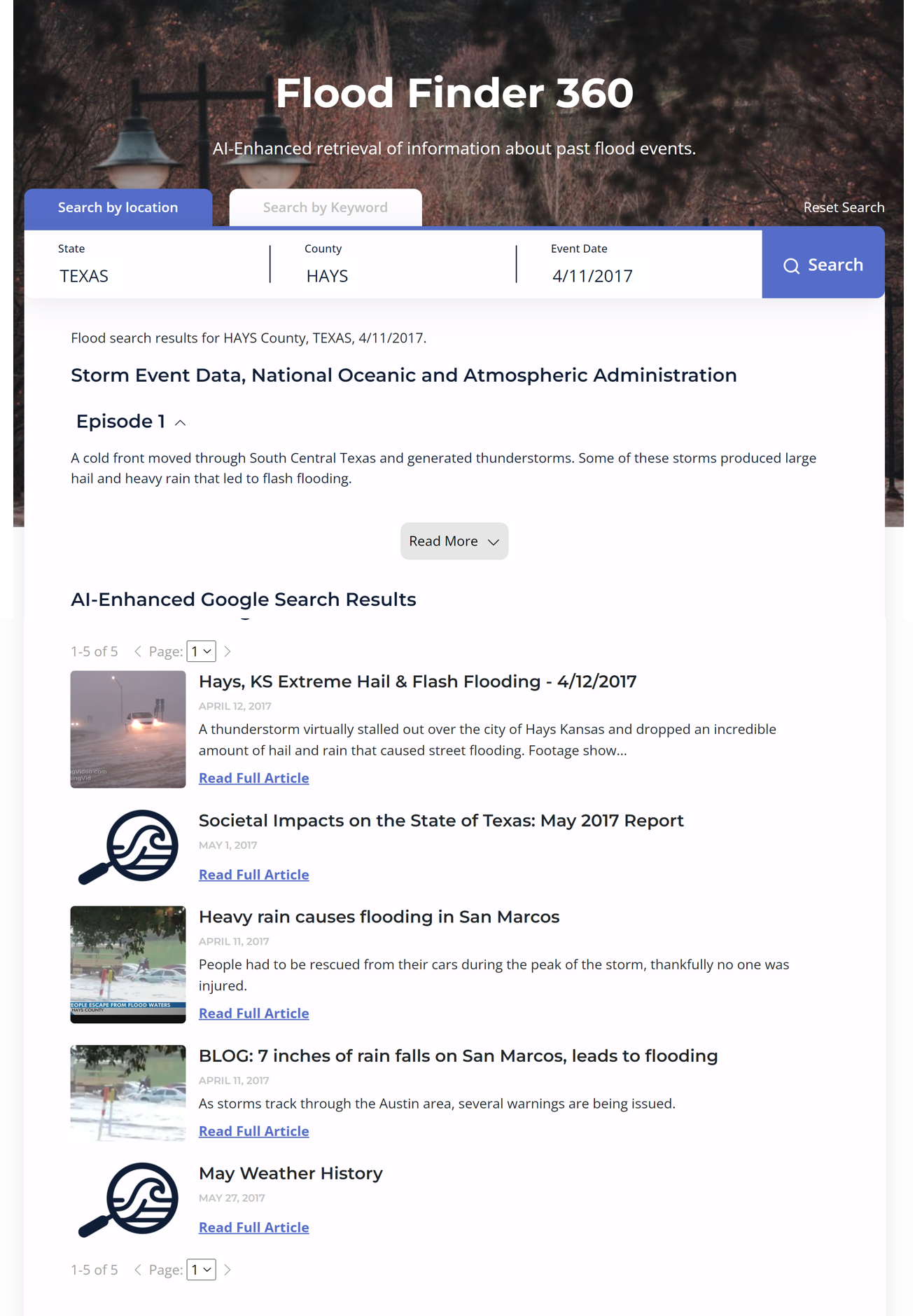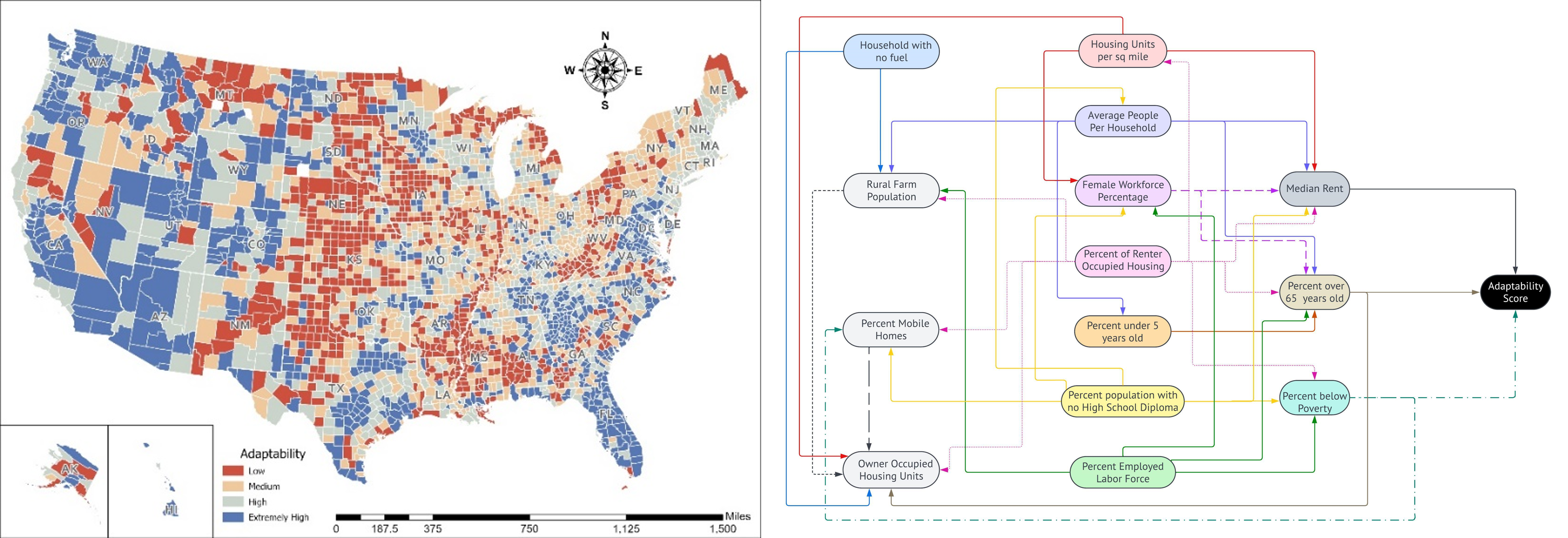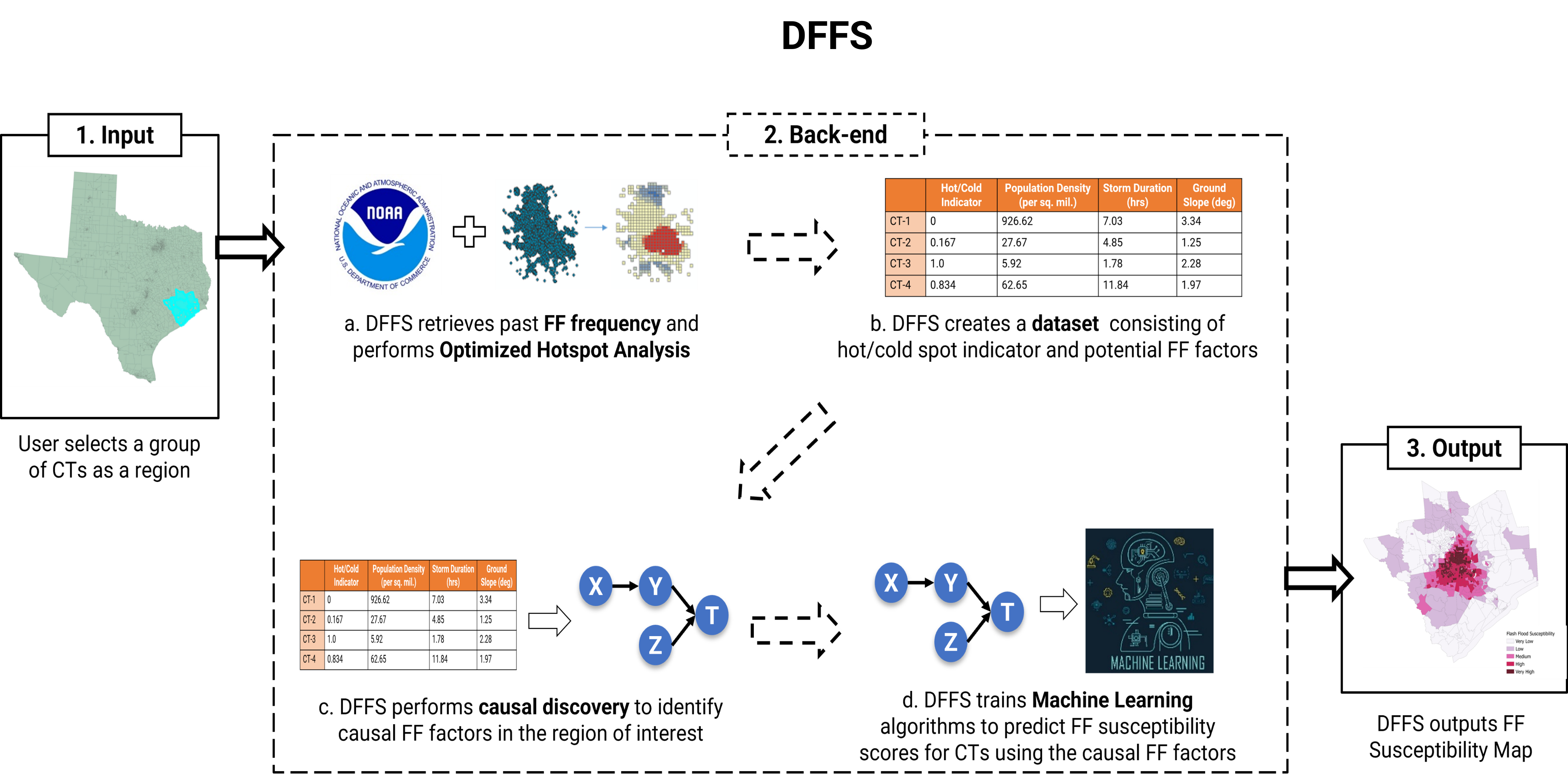Open Source Software
In the pursuit of bridging research with real-world application, I am dedicated to make my work both accessible and functional. This commitment is evident through the promotion of open science, particularly in the development of tools supporting advanced analysis in disaster management, with a focus on flash flood prediction and response. Each of these tools represents comprehensive research distilled into practical applications, enabling users from various sectors to harness cutting-edge technology for the betterment of societies worldwide.
1. Flood Finder 360

FloodFinder360 is a software solution designed to analyze historical flash flood events in the U.S. What makes it special are the advanced Natural Language Processing (NLP) and Machine Learning algorithms it uses, which greatly improve how we retrieve information. It's shown a 63% improvement in performance compared to standard search engines. This tool is all about unraveling disaster patterns and shaping proactive mitigation strategies. You can access FloodFinder360 right [here].
2. Platform for Resilience Inference Measurement and Enhancement (PRIME)

PRIME is a platform hosted on CyberGISx that uses machine learning to generate an objective, data-driven index for assessing community resilience during disasters. It stands out by considering socio-economic factors, providing a detailed analysis of regional resilience and identifying key socio-economic contributors. PRIME aims to contribute to disaster preparedness by assisting in the development of effective response strategies and enhancing community resilience.
3. Dynamic Flash Flood Susceptibility (DFFS)

DFFS is a GIS-based software with machine learning capabilities designed to address the challenges of flash floods in the U.S. It specializes in analyzing the factors contributing to these region-specific events. DFFS offers customized assessments of community vulnerability, aiming to enhance flash flood prediction and preparedness accuracy. This tool represents an advancement in technology, with the objective of improving community resilience and reducing the risks associated with these unpredictable natural disasters.
